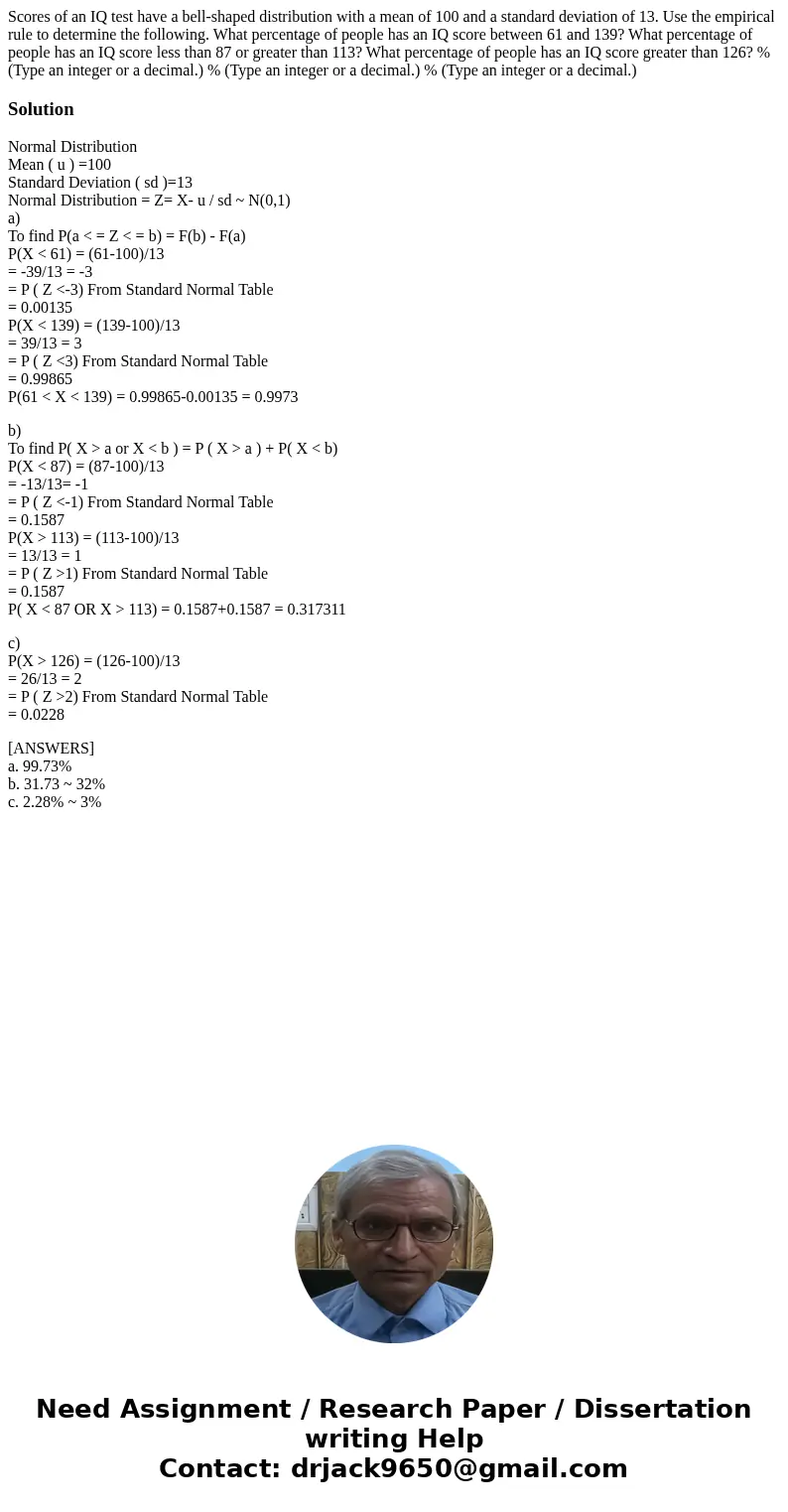Scores of an IQ test have a bellshaped distribution with a m
Solution
Normal Distribution
Mean ( u ) =100
Standard Deviation ( sd )=13
Normal Distribution = Z= X- u / sd ~ N(0,1)
a)
To find P(a < = Z < = b) = F(b) - F(a)
P(X < 61) = (61-100)/13
= -39/13 = -3
= P ( Z <-3) From Standard Normal Table
= 0.00135
P(X < 139) = (139-100)/13
= 39/13 = 3
= P ( Z <3) From Standard Normal Table
= 0.99865
P(61 < X < 139) = 0.99865-0.00135 = 0.9973
b)
To find P( X > a or X < b ) = P ( X > a ) + P( X < b)
P(X < 87) = (87-100)/13
= -13/13= -1
= P ( Z <-1) From Standard Normal Table
= 0.1587
P(X > 113) = (113-100)/13
= 13/13 = 1
= P ( Z >1) From Standard Normal Table
= 0.1587
P( X < 87 OR X > 113) = 0.1587+0.1587 = 0.317311
c)
P(X > 126) = (126-100)/13
= 26/13 = 2
= P ( Z >2) From Standard Normal Table
= 0.0228
[ANSWERS]
a. 99.73%
b. 31.73 ~ 32%
c. 2.28% ~ 3%

 Homework Sourse
Homework Sourse